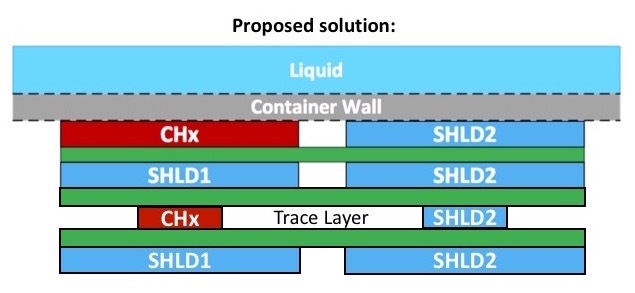I have been using the application note for liquid level sensing with the FDC1004 (TIDU736A), which has been very helpful. However, I am having issues with the signal from the reference electrodes. If both Reference(level) and Reference(environment) are used, one of them will have its trace run the height of the container, and its capacitance will change slightly as the container fills beyond where the intended step function occurs. In the application paper, Reference(environment) has this trace, but I do not see any data from this electrode and so the issue is seemingly avoided.
In my specific application, I created a custom PCB with the FDC1004 at the top of the board, so there is a trace running from the bottom Reference(level) electrode to the top. The capacitance for this electrode jumps as it is covered by the liquid, but then continues to increase slightly as the container continues to fill because the trace is acting as a mini electrode for the remaining height of the container.
Would it be possible to address this issue by using a multilayer board, where the shield electrodes have two layers, and sandwiching the trace(s) between them? I am using the out of phase technique as described in the application note. This seems like a reasonable approach to me, but am not familiar enough with the OoP technique to understand whether this will cause issues. Here is what I am proposing:
Thank you in advance!



